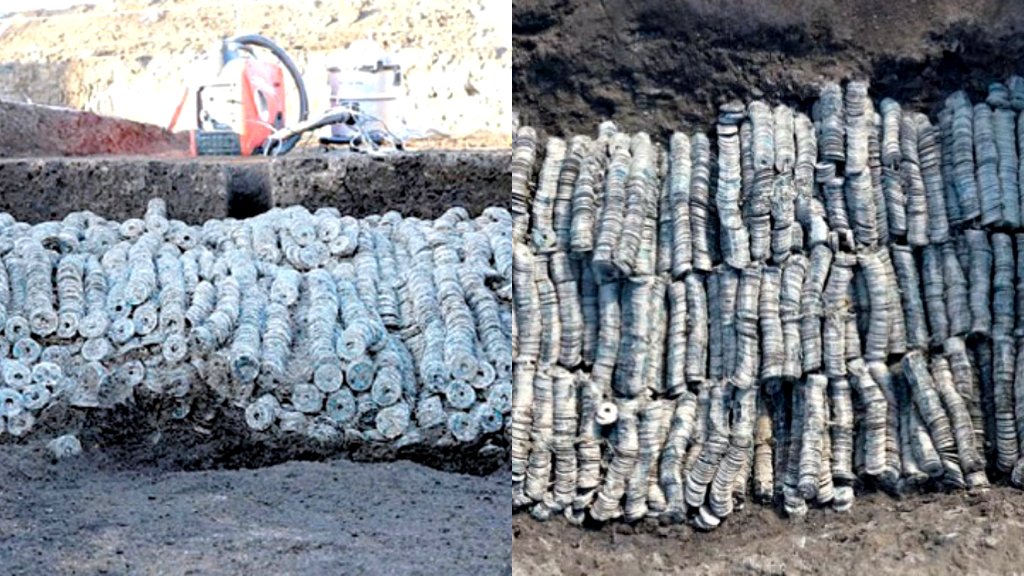
via Maebashi City Government
The oldest of a sample that has so far been analyzed was found to be over 2,000 years old
Bryan Ke
NOVEMBER 24, 2023
AN ENORMOUS TROVE of 100,000 ancient coins were recently discovered in Maebashi, a city in Gunma Prefecture, Japan, with archaeologists estimating some of them to be over 2,000 years old.
Discovery: The coins, stacked together in 1,060 bundles, were unearthed at a construction site for a new factory in the city’s Sojamachi district, according to The Asahi Shimbun. Local officials said they were found in an area measuring 60 centimeters by 1 meter, with each bundle containing about 100 coins.
The coins were subsequently featured in an exhibit. “I was surprised because I had never seen so many buried coins,” a visitor in her 70s said, as per NHK.
Analysis: At least 334 coins have been analyzed. Archaeologists identified 44 different coins from the sample.
The oldest of a sample that has so far been analyzed was found to be over 2,000 years old
Bryan Ke
NOVEMBER 24, 2023
AN ENORMOUS TROVE of 100,000 ancient coins were recently discovered in Maebashi, a city in Gunma Prefecture, Japan, with archaeologists estimating some of them to be over 2,000 years old.
Discovery: The coins, stacked together in 1,060 bundles, were unearthed at a construction site for a new factory in the city’s Sojamachi district, according to The Asahi Shimbun. Local officials said they were found in an area measuring 60 centimeters by 1 meter, with each bundle containing about 100 coins.
The coins were subsequently featured in an exhibit. “I was surprised because I had never seen so many buried coins,” a visitor in her 70s said, as per NHK.
Analysis: At least 334 coins have been analyzed. Archaeologists identified 44 different coins from the sample.
The oldest one was believed to be a Ban Liang coin from 175 BCE. Ban Liang coins were the first minted in unified China during the Western Han Dynasty between 220 BCE to 9 CE. Meanwhile, the most recent coins were from 1265, a year within the Kamakura Period (1185 to 1333). This suggests the coins were buried during the period.
What experts are saying: Archaeologists believe the coins were buried due to a looming war. The site of discovery was reportedly close to the homes of important figures in medieval Japan.
Ethan Segal, an associate professor of history at Michigan State University, told Live Science that other coin hoards have been found across Japan. “Caches of buried coins, mostly from Japan’s medieval period — 13th through 16th centuries — have been found in many locations around the archipelago,” he said.
No comments:
Post a Comment